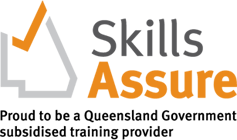The importance of first aid training can’t be overstated. Knowing how to administer immediate first aid to an injured or ill person can, quite frankly, be the difference between life and death.
Despite the prominent significance of first aid, there is still a surprising amount of Australian individuals who don’t have a first aid certificate.
According to SBS, it is estimated that only 5% of Australians have a current first aid certificate. Thus, out of 26.4 million Australian citizens, there are only 1.3 million trained first-aiders across the entire country!
Given the seemingly lenient approach to first aid in Australia, we at Sage Education believe that you should know the roles and procedures of a first aider.
Within today’s guide, we shall also examine the following:
– First aid kits.
– Types of first aid services.
– Lastly, we shall look at the best first-aid courses.
What Is A First Aid Officer?
Before we look into the roles, skills, and procedures of a trained first aider, it is essential that you know what a first aid officer is.
A first aid officer is an individual who is appropriately trained to provide immediate medical assistance to a sick or injured individual in times of crisis.
A first aid officer will also conduct first-aid assessments of the surrounding environment to identify additional health and safety risks and ensure the affected casualties are safe from further harm.
Ultimately, a first aid officer is an individual who will preserve your life, prevent your condition from worsening, and complete incident reports that are passed on to emergency medical services.
Types of First Aid Officers
First aiders, like any hierarchy within the emergency services, will have different roles depending on their assignments and first aid qualifications.
Below, we shall uncover the different roles within the field of first aid.
A Workplace First Aid Officer
A workplace first aid officer’s primary goal is to provide emergency care for employees who are caught in a life-threatening predicament.
High-risk workplaces may have multiple first aid officers, depending on the nature of the work and its location.
First aid officers who lend their services to both high-risk and low-risk workplaces should have certain qualifications.
The first qualification is known as EFAW (Emergency First Aid at Work), which allows the first aid officer to administer first aid to an injured or ill employee.
Secondly, a workplace first aid officer should have a FAW (First Aid at Work) qualification. This qualification means that the first aider is qualified at an EFAW level but can also administer first aid to a range of injuries or illnesses.
A workplace first aider should also have access to a well-stocked first aid kit and a first aid room.
A Mental Health First Aid Officer
First aid doesn’t just encompass physical well-being; it also involves the maintenance of mental welfare.
Mental health first aid inspires recovery and resilience, assisting individuals who may suffer from the following:
– Depression.
– Mood disorders.
– Anxiety disorders.
– Trauma.
– Psychosis.
– Substance abuse/addiction.
A mental health first aid officer’s role is to recognize risk factors and warning signs for potential mental crises and strategize to prevent such incidences from occurring.
A Pediatric First Aid Officer
A pediatric first aid officer focuses on the health and safety of children. Child-based first aid is primarily meant for low-risk environments that may still be hazardous regarding accidents. Given that children are more fragile than adults, minor accidents can still prove to have severe consequences.
Although the role of a pediatric first aid officer remains largely unchanged from a standard first aid officer, there are still some slight variations.
Pediatric first aid officers will also know how to perform baby resuscitation, deal with head injuries, and tend to choking victims.
The Role of First Aid Officers
Of course, the role of a first aid officer is to provide immediate medical assistance to an injured or ill individual, preventing said individual from further harm.
However, there is so much more to the role of a first aid officer. Below, we have examined the typical duties that a first aid officer must fulfil to apply effective, immediate treatment.
- A first aid officer must perform a risk assessment of the scene, checking for hidden dangers, the cause of the accident and how many casualties require aid. This risk assessment is crucial to protecting not only the casualties but also the first aid officer’s own health.
- If a first aid officer faces a minor accident, they must provide psychological first aid. However, if they encounter a life-threatening situation, the first aid officer must perform cardiopulmonary resuscitation.
- A first aid officer is responsible for moving an injured individual from the scene if they are still in immediate danger and if it won’t cause further harm to the casualty.
- A first aid officer must call the emergency services as quickly as possible.
- A first aid officer must prevent infection between them and the casualty.
- A first aid officer must comfort and reassure the casualty.
First Aid Equipment That You’ll Use
Knowing the ins and outs of professional first aid treatment is as equally crucial as knowing what the ideal first aid kit looks like.
With an abundance of first-aid kits available, you must be able to recognize and utilize both standard and specialised items.
A Basic First Aid Kit
It is incredibly likely that you have encountered a basic first-aid kit. These standardized kits should always be well-stocked and kept in a safe place within your home/car.
Listed below is the typical first-aid equipment you can expect to find in a basic first-aid kit.
– Plasters (in a variety of shapes and sizes).
– Sterile gauze dressings (adhesive and non-adhesive).
– Sterile eye dressings.
– A range of bandages.
– Disposable gloves.
– Alcohol-free cleansing wipes.
– Scissors.
– Tweezers
– Safety pins.
– Sticky tape.
– Thermometer.
– Skin rash scream.
– Cream/spray for insect bites and stings.
– Antiseptic cream.
– Pain killers.
– Distilled water (for cleaning wounds).
– A first aid booklet.
It is worth noting that both a workplace and a portable first-aid kit hold the same contents as a basic kit, with the exception of perhaps foil blankets and finger dressings.
Additionally, other personal protective equipment includes high-visibility jackets, face masks, and safety glasses.
Burn Kits
Expectedly, the first aid supplies that you will find in burn kits differ quite significantly.
Here’s what you will find inside a well-stocked burn kit.
– Burnshield burn dressings (saturated with hydrogel and tea tree oil).
– Burnshield burn blott sachets.
– Burnshield digit dressings.
– Eyewash pods.
– Conforming bandages.
– Nitrile gloves.
– Microporous tape.
– Blunt-ended scissors.
By familiarizing yourself with the typical components of a first aid kit, you will have a better understanding of the first aid treatment you will administer. Furthermore, if you’re looking into a first-aid course, having a general comprehension of the tools you will use during your training will give you a slight advantage.
Where You Can Study To Become A First Aid Officer
At Sage Education, our educative efforts aren’t limited to child care, aged care, and disability support competencies.
Although we pride ourselves on our transformative, specialized modules, the heart of our ethos stems from our mission to provide our graduates with the knowledge to enhance someone’s life. That is why we have dedicated our time and effort to creating an immeasurably accessible first-aid course.
Additionally, Sage Education is one of Australia’s top providers of nationally recognised VET courses in child care, aged care, disability, and community services sectors.
That means that when you study with Sage Education, you will receive unparalleled practical training to accompany your academic prowess!
Enrol With Sage Education
Hopefully, what you’ve taken away from this article is that first aid is more than an embellishment for your resume – it is a vital competency that we should all have.
With that being said, it’s time to put your newfound knowledge into practice. Enrol with Sage Education and experience an unexcelled educative journey. With our first-rate modules, you will not only have the skills to administer first aid effectively but also gain the confidence to manage and resolve any emergency.
If you would like to explore your passion for transforming lives further, why not expand your skill sets? Consider our Certificate III in Individual Support (Ageing or Disability) course and witness firsthand how your services can enhance the lives of others.
All you need to do is get in touch!



